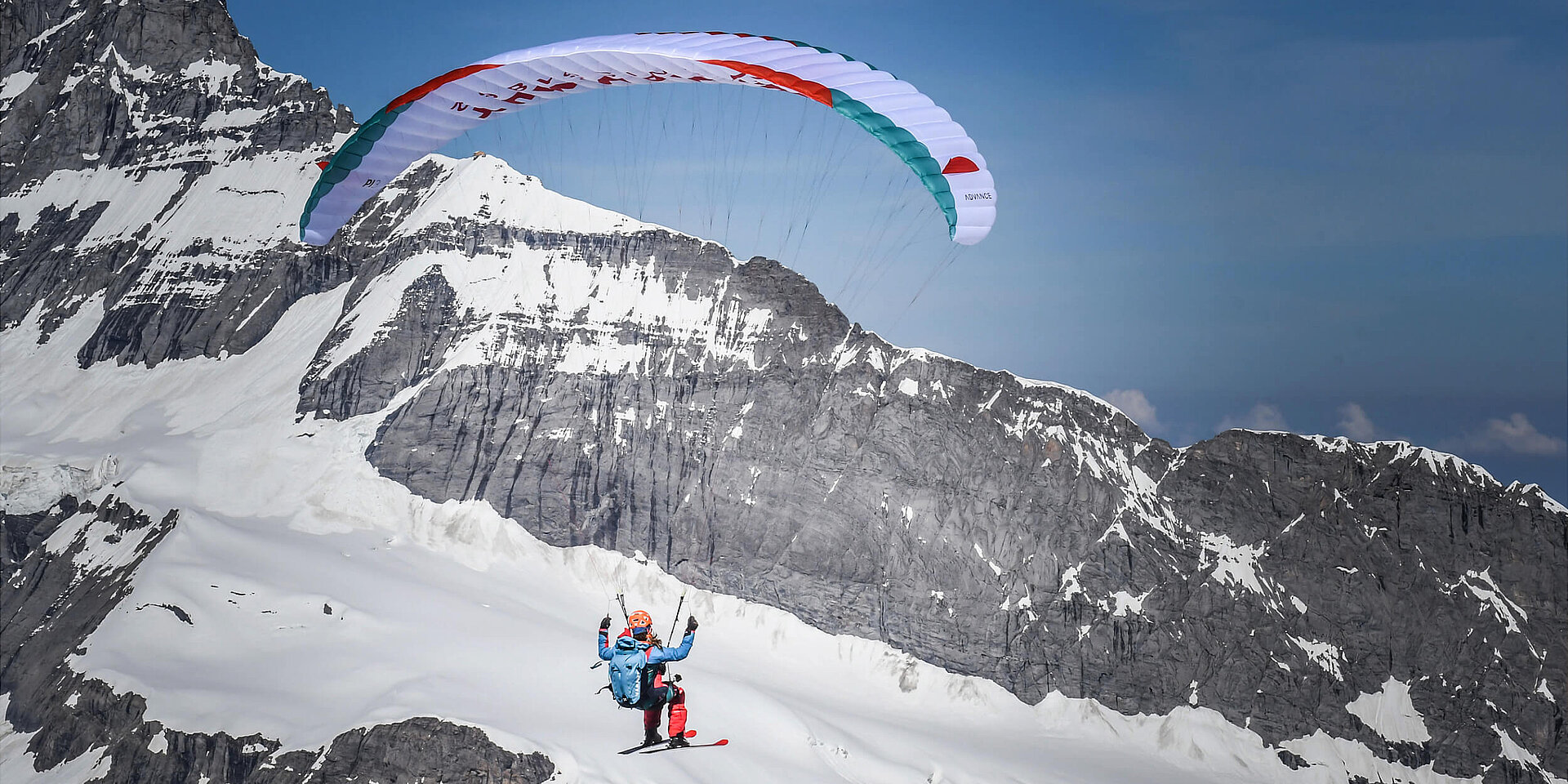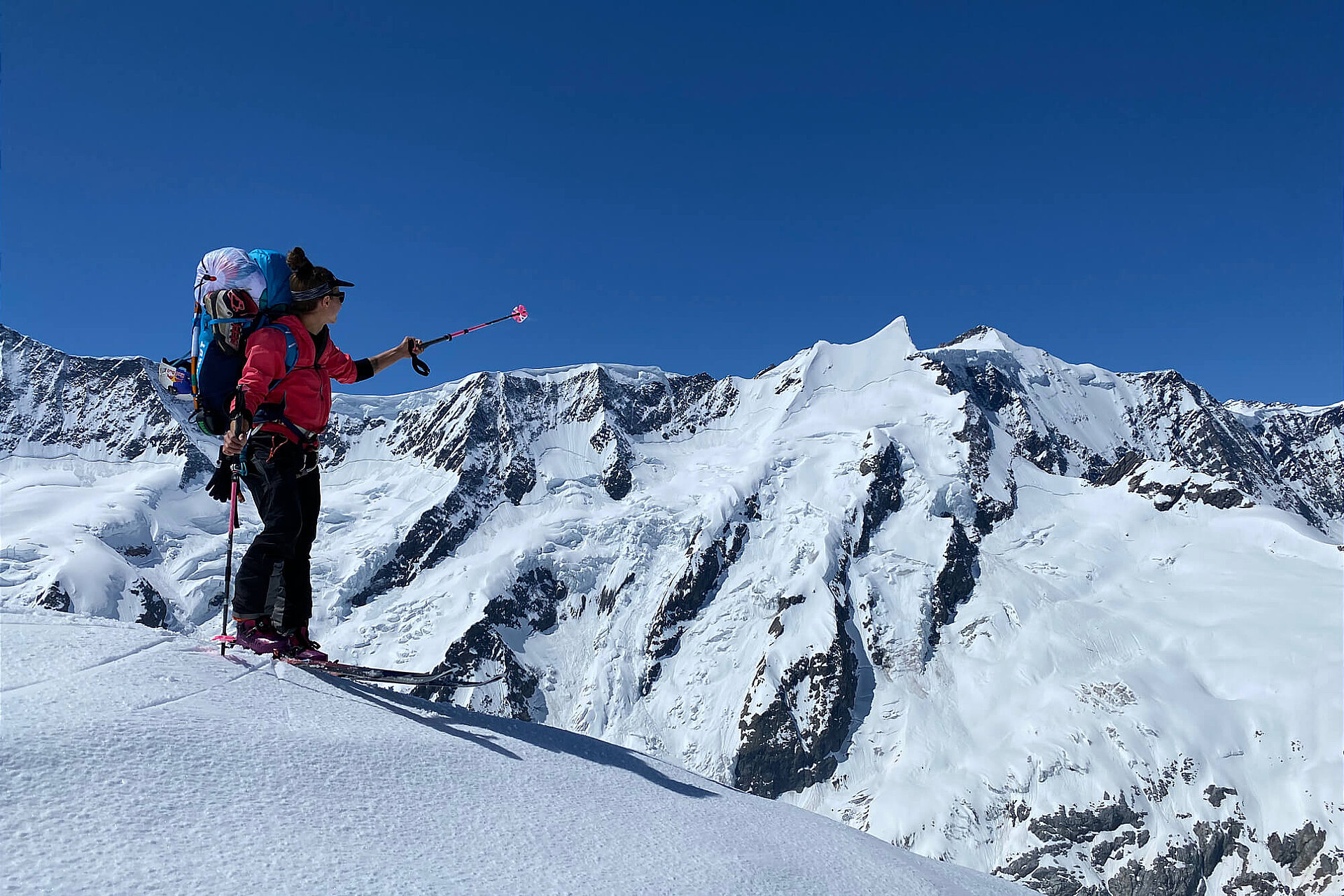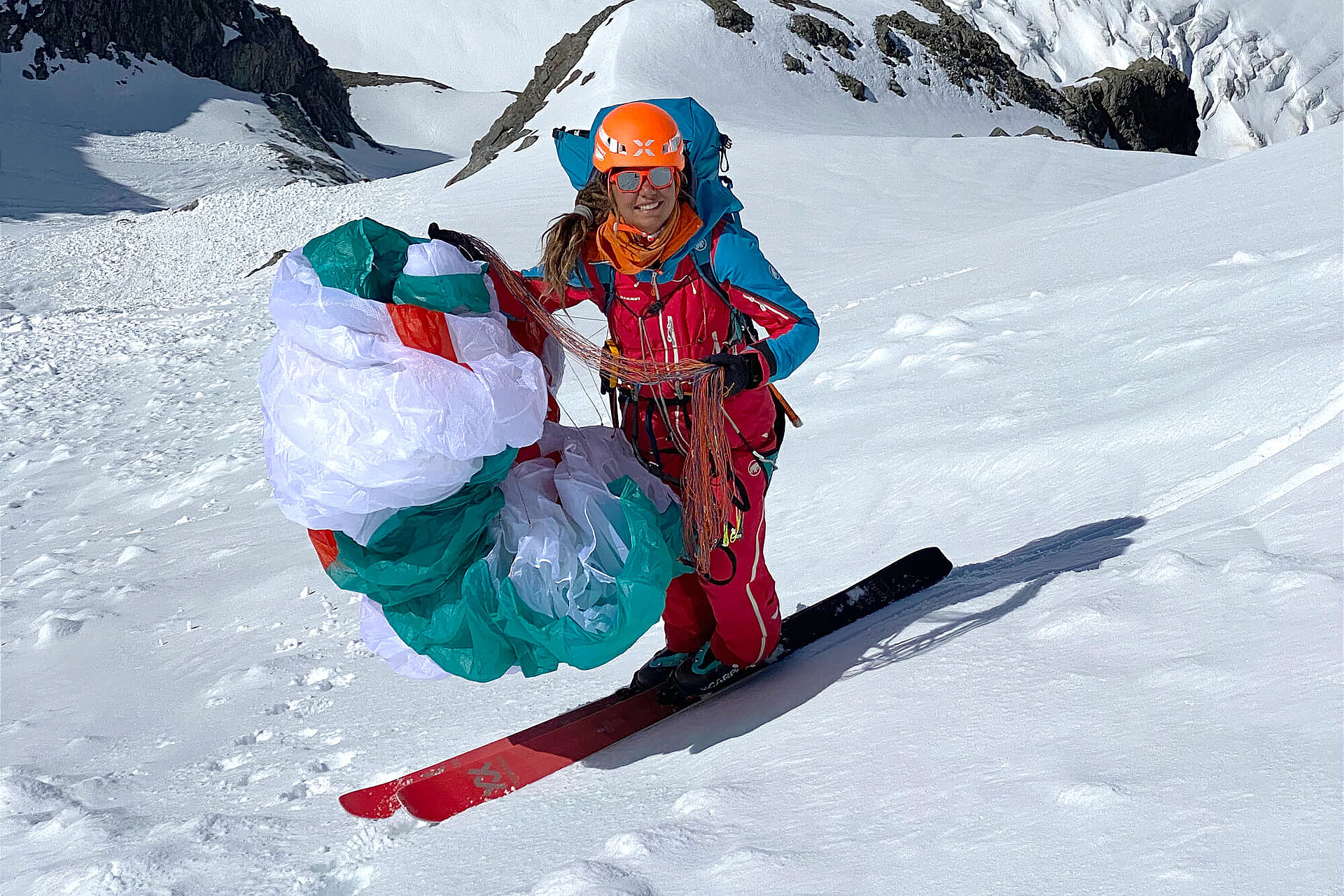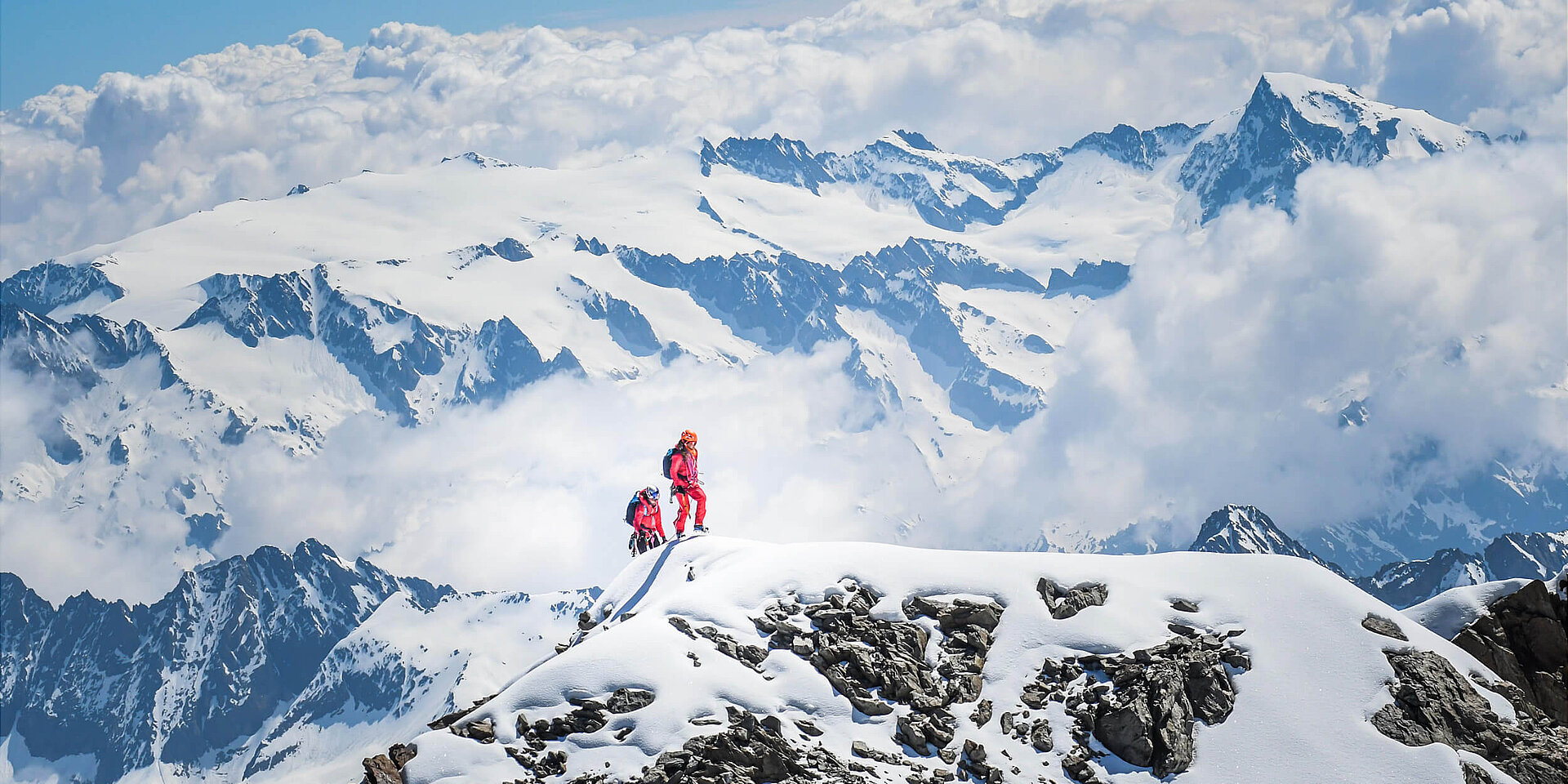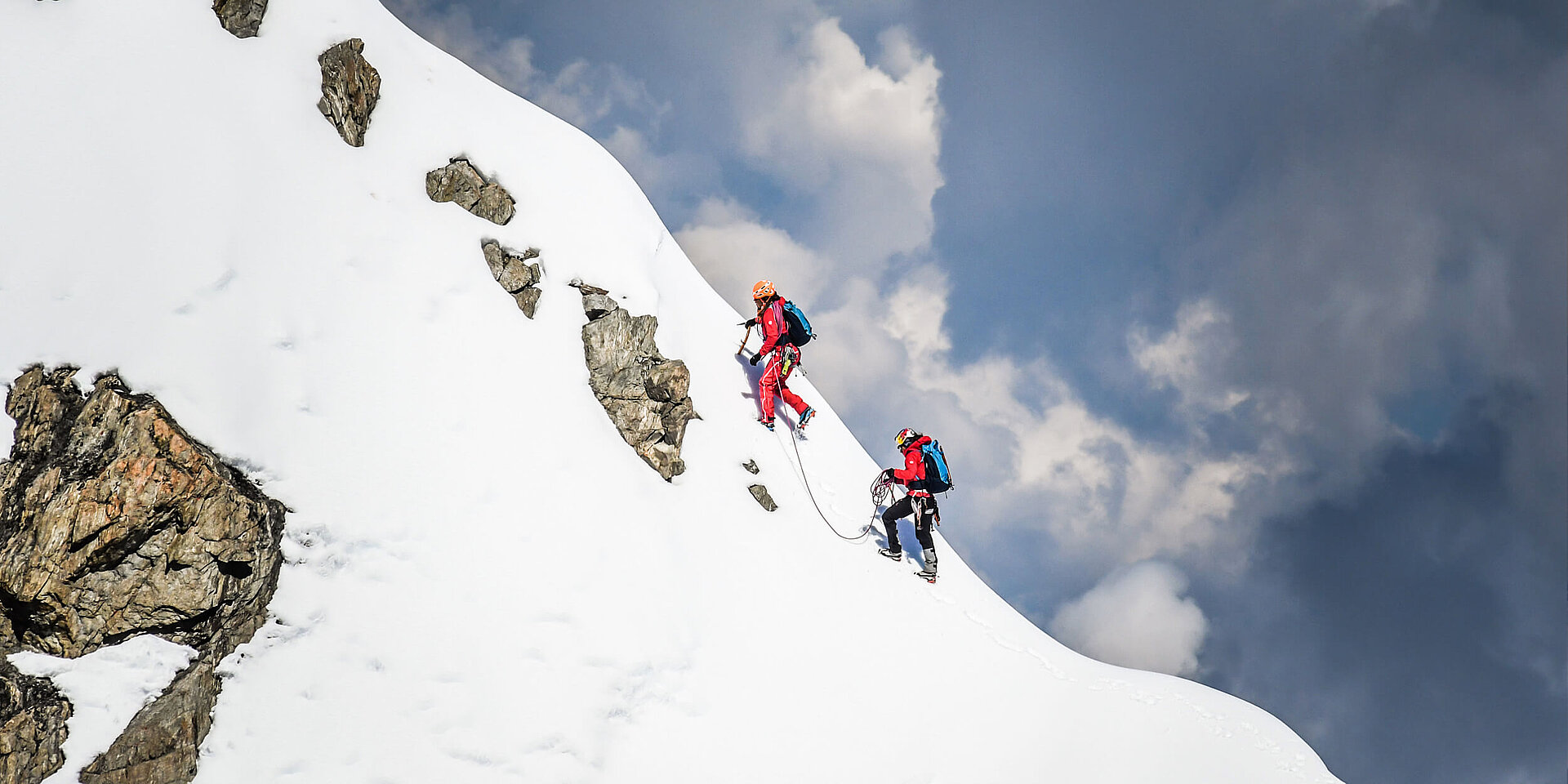To transit the 4,078 metre Schreckhorn is one of the most demanding high altitude tours in the Alps. Heavy snowfall initially interrupted the plans of Caro North and Nadine Wallner, but then the two professional alpinists suddenly find themselves on touring skis in the middle of summer. And the use of their paragliders decides whether this challenging project can be achieved.
It is the beginning of June and has been snowing up to 2,000 metres. Avalanche risk in the Alps is high. An approaching high pressurewindow looks good for a long-awaited tour, but the direct approach is anything but safe. What to do? “What if we just fly over the critical slopes?” Caro suddenly says, and a smile lights up her face. In no time Caro and Nadine have packed their mountain-climbing, skiing and paragliding gear and board the train for the Jungfraujoch. It’s a round about route, but one that is unavoidable.
Flying miracle bag
First, fully loaded up, they head from the Jungfraujoch on touring skis to the Mönchsjoch hut. Here Caro and Nadine spend their first night. The destination for the next stage is the bivouac site at the foot of the Schreckhorn, but in between lies a block of icethat drops away 1,000 steep metres, part of a large inaccessible glacier. Its name: the Ice Sea. The paraglider will hopefully overcome these problems. What sounds so simple usually turns out to be more complicated, and flying in high mountains requires a lot of experience. Often the wind is too strong, the cloud base too low or the weather just not good enough.
Morning Magic
The first rays of sunlight touch the summits, and a little later the mountains all around glow in the morning light. A new day awakens and with it Caro and Nadine move towards the Fiescher saddle. They want to takeoff on the east side of the Grosser Fiescherhorn at almost 4,000 metres. The weather and wind are perfect. One last look, a quick "good flight" and Caro takes off. Nadine behind. Glide performance is difficult to estimate with heavily loaded gliders and skis on their feet, so the two hope that they will arrive high enough on the other side. The grin is all the wider when they land only a little below their sleeping place. The plan has worked and they are even higher up than they guessed. Brilliant!

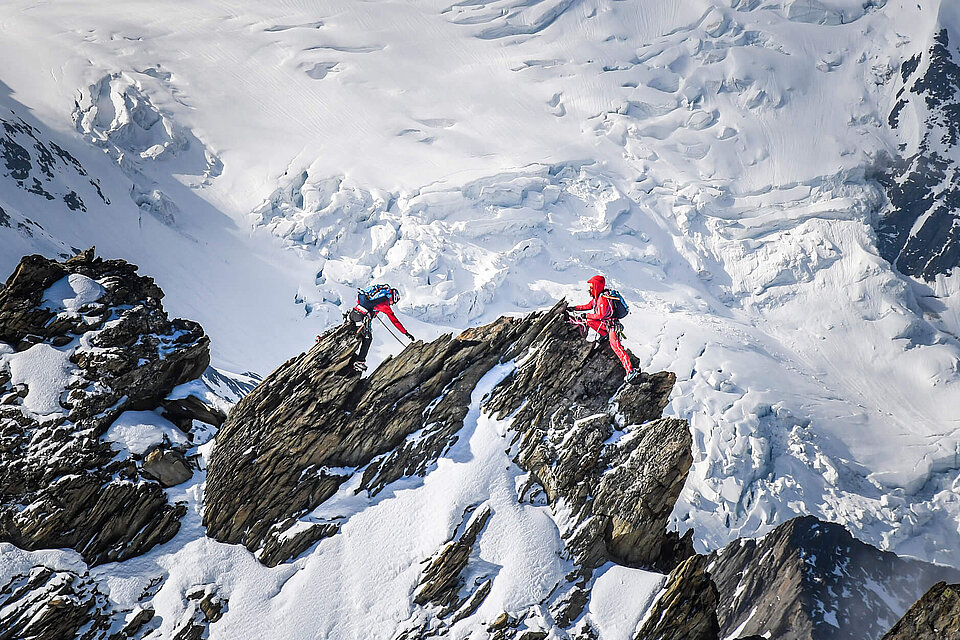
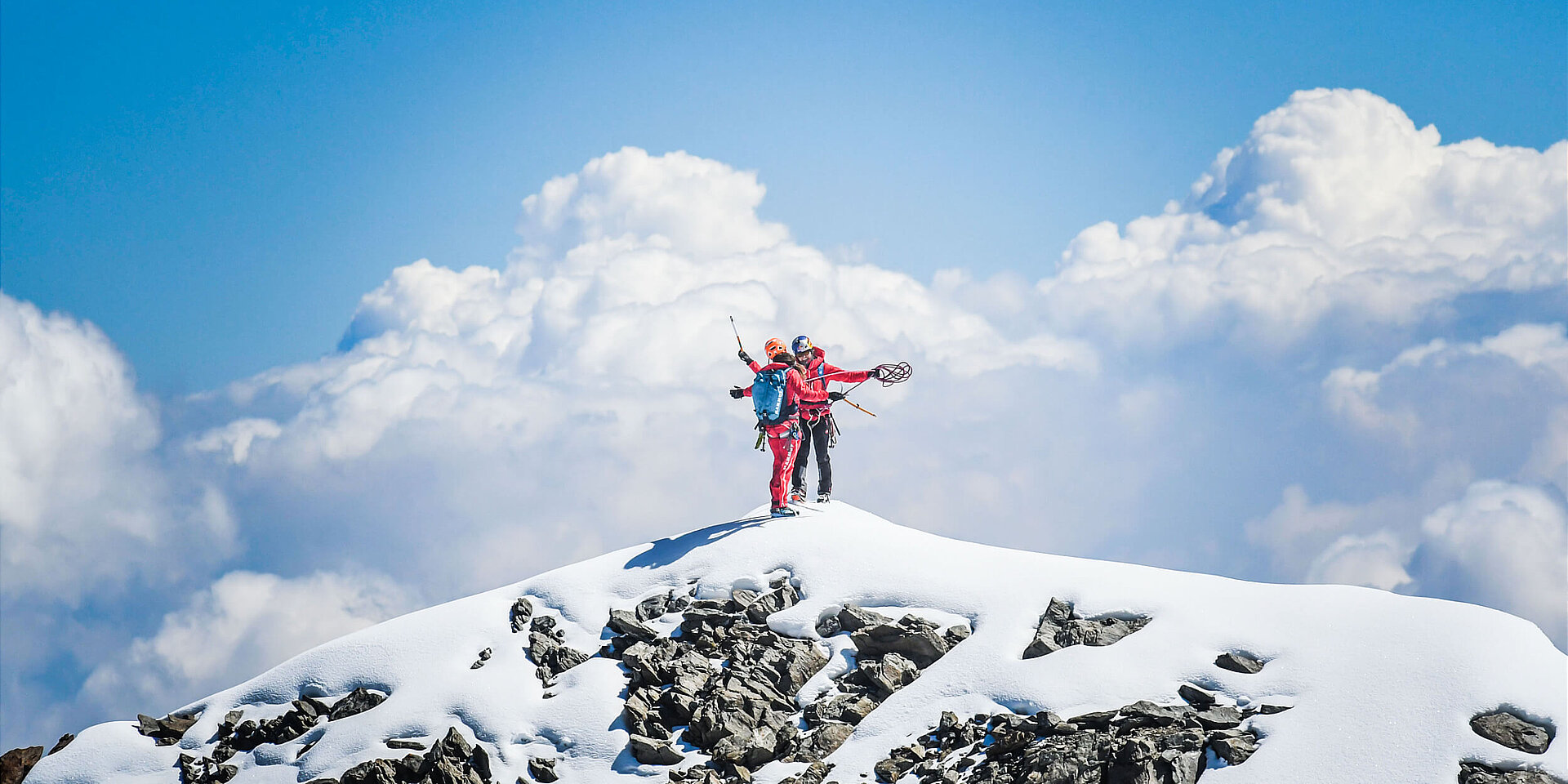
Summit success...
That night in the tent was cold. Nadine and Caro set off while it’s still dark to climb the ridge between the Lauteraarhorn and the Schreckhorn. From there, the pair want to reach the Schreckhorn summit. First, the ascent is on a steep flank, and then it’s on tothe exposed ridge. The last few metres to the summit have to be traversed in snow. It is strenuous, tiring, but once at the top the view is simply overwhelming. The two women are in each other's arms, beaming with joy. What an amazing moment. "We enjoy the moment before we descend from the Schreckhorn via a normal route, which is still very snowy in parts, and get back to our bivouac spot," Nadine tells us. Now the paragliders come into play again to fly back to the valley...

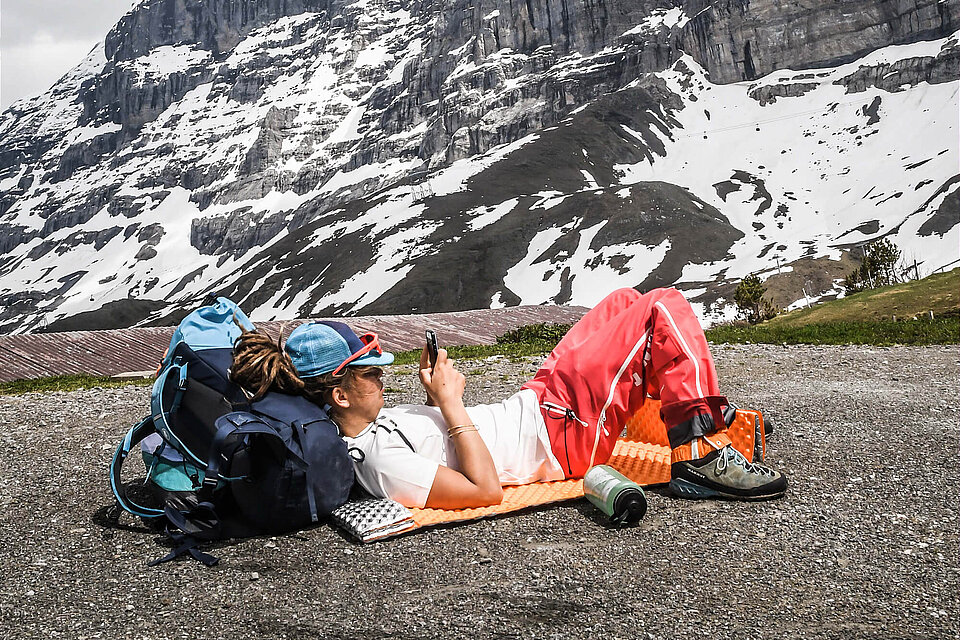



...is not the same as paraglider success
Unfortunately, the weather gods show the two climbers no mercy. The clouds travel fast, faster than Caro and Nadine. When the two arrive back at their bivouac site they are already in the middle of a whiteout. With a maximum visibility of one to two metres, flying is out of the question. And so they wait, waiting and hoping that it will open up again. "We had a bad premonition that we would have to spend another night in our bivouac if the cloud cover didn't clear," Caro reports. But hope lies eternal. Finally, a few hours later and a few hundred metres lower, they find a hole in the cloud. They seize the opportunity, take off and soon land in Grindelwald, overjoyed.
Thanks to Lucien Caviezel and Roger Schäli for their help. There is a film of the complete tour in the 20th EOFT.
The Equipment
The Team
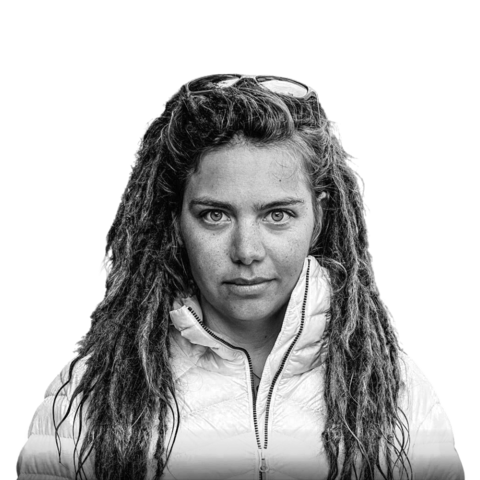
Caro North
Caro North is a mountain guide and professional alpinist. At age 16 she summited the 6,961m high Aconcagua in South America. Since then she has embarked on numerous expedition to Patagonia, the Indian Himalayas, Iran, Armenia, Alaska, South Africa and the ins Yosemite Valley.

Nadine Wallner
Nadine Wallner first tried her skis aged three, so it’s no surprise that she went on to win the Freeride World Tour twice. This Austrian mountain guide spends every free minute outside on skis, climbing or flying: preferably all three on the same adventure.
